Service Records appears to be a potentially unwanted program that gets installed on Mac computers along with the other freeware programs. At the moment of writing this article Service Records is known to be actively infecting Mac operating systems via shady propagation techniques. As long as Service Records remains installed on your Mac it is able to collect information that may directly or indirectly identify you. Additionally, your web browser is likely to be flooded with many annoying ads. Since these ads may be related to hacked websites, you should avoid any interactions with them.
Remove Service Records and Secure macOS
Service Records Manual Removal Guide
Skip all steps and download anti-malware tool that will safely scan and clean your Mac.
Run a free scan and check if your Mac is infected with malware.
SpyHunter for Mac Scanner feature is free. Other features are paid. Here you can review its EULA and Privacy Policy.
Distribution of Service Records Mac Malware
Potentially unwanted programs such as Service Records Mac are distributed via the so-called “bundling” method. Thus, the undesired program is promoted via rogue installation set-ups that do not disclose properly all apps that are to be installed. If you skip selecting the ” Advanced /Custom” settings, Service Records hijacks browsers and modify various settings imperceptibly.
Service Records Mac App
The Service Records is an unwanted program that is designed to affect Mac operating systems. The good news is that Service Records is not a virus, hence, it won’t cause troublesome issues. Still, its installation tends to happen behind users’ backs. The program is part of a large network of similar threats that all seek to impact the victim’s security and privacy.
It follows the traditional browser infection patterns by modifying the most important settings on the victim software. Usually, criminals target the most popular ones (Mozilla Firefox, Google Chrome, and Safari).
Usually, such types of threats alter only the three basic browser parameters related to the online behavior: new tab page, default search engine, and home page. As soon as changes are done the victims will be redirected to a hoax home page or a copied version of a popular search engine like Yahoo or Bing. In addition, the program may show a pop-up error message that states:
ServiceRecords will damage your computer
Do not believe this message and continue with the removal process. Otherwise, you risk helping the unwanted app to cause a further impact on the macOS and its security.
Like other similar PUPs for Mac, the Service Records institutes tracking cookies that monitor and track all user behavior which is reported back to the program operators. This privacy-invasive tactic is used to make profiles of the users, including their preferences and interests which are gathered in a database shared with all other products operated by the company owner. As Service Records infects the web browsers, it can also extract sensitive information such as browsing history, bookmarks, preferences, cookies, account credentials, and passwords.
One of the most dangerous aspects of Service Records being active on a Mac is the opportunity it has for unnoticed data collection. Some cookies may record sensitive credentials. Such an issue exposes your privacy at serious risk. Your online safety is endangered as well.
The use of a complex multi-stage redirect used by the undesired program in turn, can lead to malware delivery. Various viruses, malware, ransomware, and other threat may run on the system without any notification. This is the reason why these threats must be removed immediately upon infection.
To sum up, Service Records Mac is a type of app that can easily be found across the web. It usually does not affect the computer operating system in a serious way. Still, its presence on the machine is highly risky. On the one hand, this software can totally modify the settings in installed browsers (Safari, Chrome, Firefox, and others) and then obtain permission to readjust them every time you try to fix them manually. On the other hand, this issue will lead to frequent browser redirect issues. Your search results may be hijacked by suspicious websites and lots of sponsored content. And your sensitive data is threatened by online scammers and fraudsters.
For the sake of your online security, we recommend that you check the Service Records removal guide that follows and see how to remove this unwanted software from all the affected browsers and the macOS as well.
Service Records Mac Removal Guide
If your system is showing infection symptoms, you should definitely take action and remove Service Records and related files from your macOS. The sooner the better! Below you can find our step-by-step Mac virus removal instructions that give you the opportunity to get rid of Service Records either manually or automatically. If you don’t feel comfortable with manual instructions, download a reliable Service Records removal tool that will scan your Mac system for malware and clean it safely for you. If any questions arise, or additional help is needed leave us a comment.
How to Remove Service Records on a Mac Manually
Remove Service Records and related files from OSX.
- 1. Force Quit all suspicious applications.
Go to the Apple menu in the upper-left corner of your screen and choose Force Quit option.
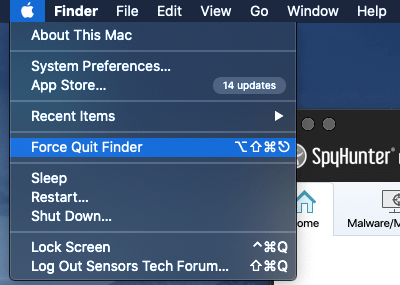
You will see a list of all currently running applications. Go find Service Records, select it and then navigate to the “Force Quit” button. You can also find the last application you installed on your Mac and stop it as well.
Since software bundling is a common propagation method, the Service Records may get installed along with the lastly installed application and their activities on the system may be related.
- 2. Remove Service Records and other related potentially unwanted applications from the Applications folder.
Open the Finder and select the Applications menu. Then search for the unwanted application and drag it to the Trash.
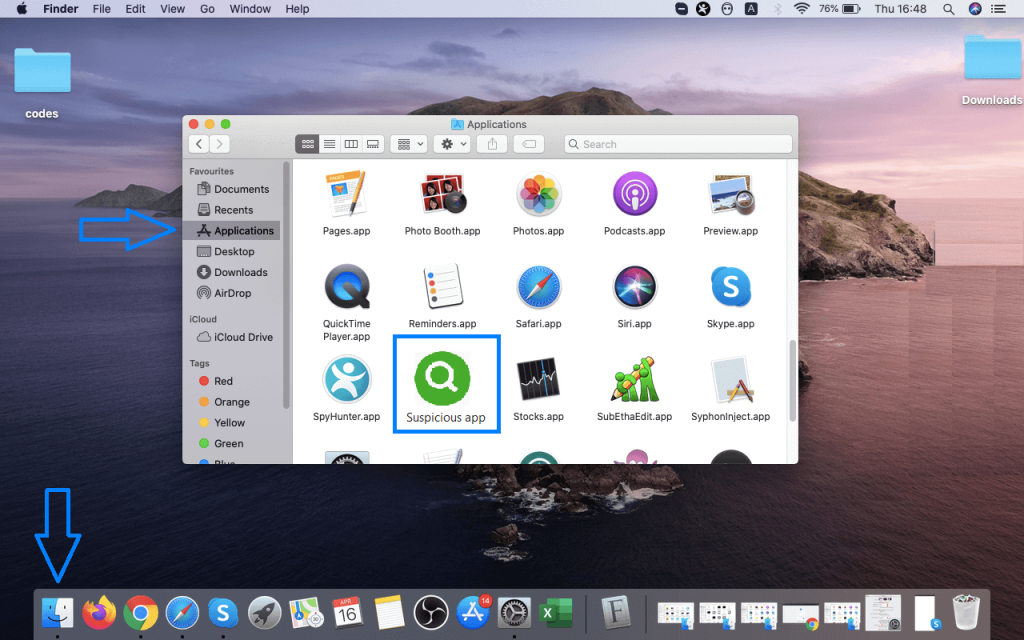
- 3. Мanually look for Service Records in the Libraries of your Mac.
WARNING! You are about to tamper with Library files on Mac. Make sure that you know the name of the virus file. Deleting the wrong file may cause irreversible damage to your MacOS.
Select Go from the top menu bar and navigate to Go to Folder…
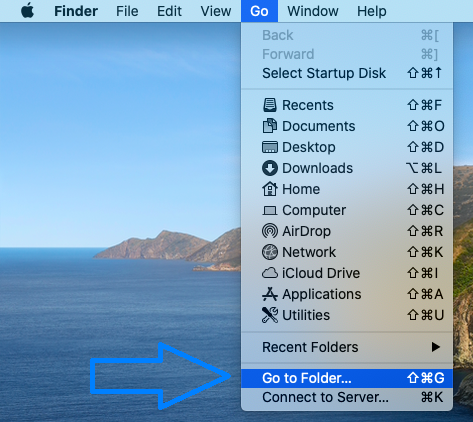
When the window appear start entering the following folder locations one by one:
/Library/Application Support
/Library/LaunchDaemons
~/Library/LaunchAgents
In each folder look for any recently-added suspicious files and move them to the Trash. Examples of files generated by adware:
- installmac.AppRemoval.plist
- myppes.download.plist
- mykotlerino.ltvbit.plist
- kuklorest.update.plist
Remove Service Records From Your Browser
Remove suspicious browser extensions that can be responsible for the appearance of invasive pop-ups and browser redirects.
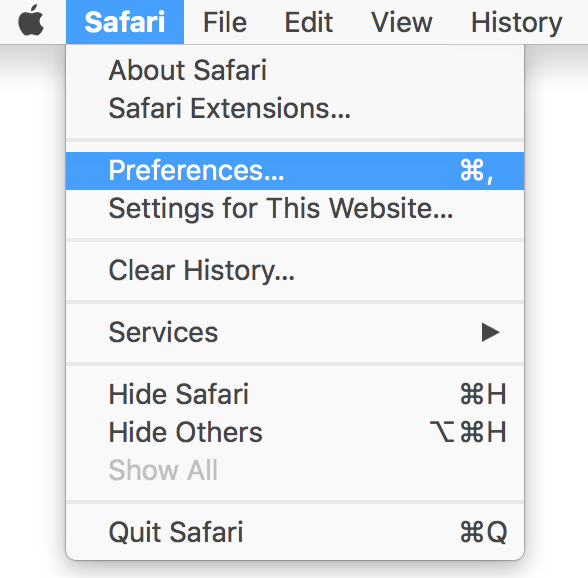
2. Click on the “Extensions” tab. If you see a suspicious or unwanted extension, select it and click “Uninstall“.
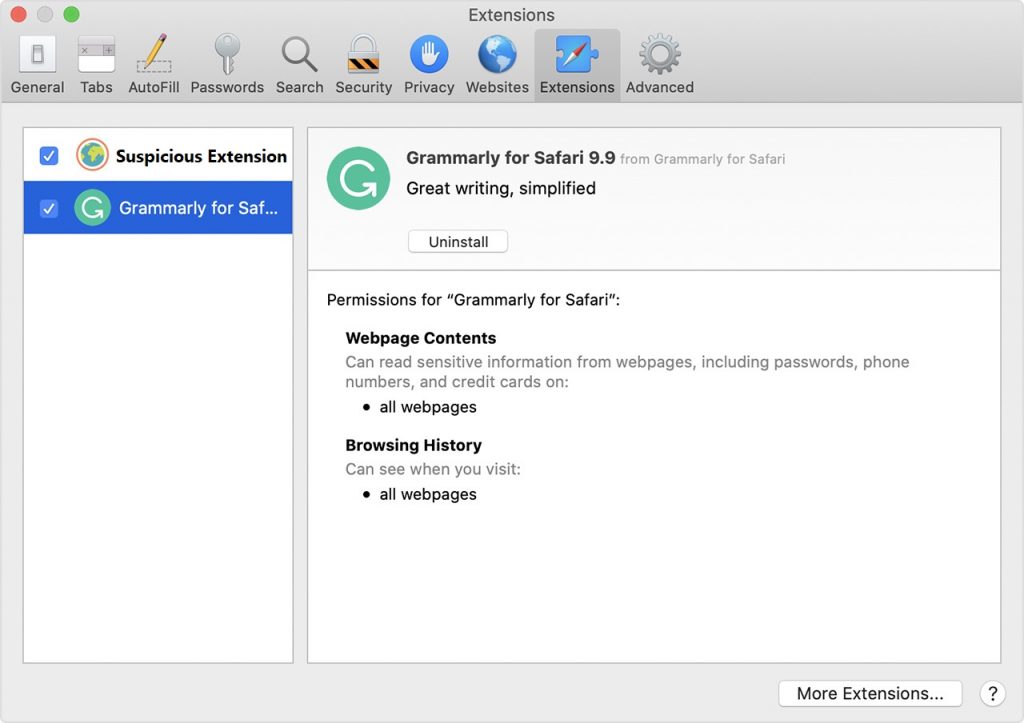
3. Reset Safari web browser. Beware that this step will remove the history as well as some of your saved data. Before you proceed we recommend that you make sure to write down all passwords, logins and important details.
If you are using Safari version 9 or higher open the browser and go to “Preferences“. Then select the “Privacy” tab. When the window appears on screen click on the “Remove All Website Data” button.
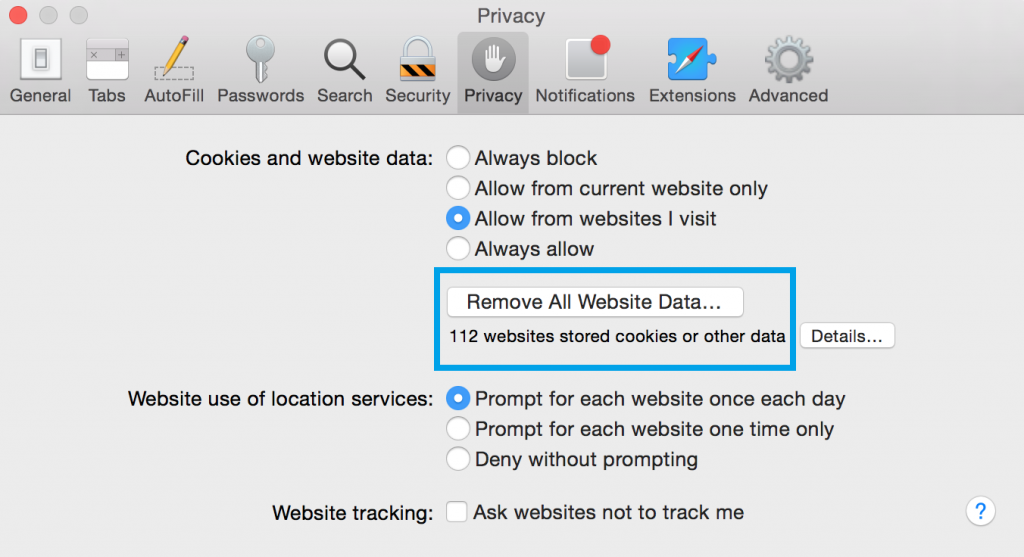
In case that your Safari web browser is running a version from 5 to 8, then just select Safari on the top menu bar and click on “Reset Safari” option. Choose which data to be cleaned from the browser.
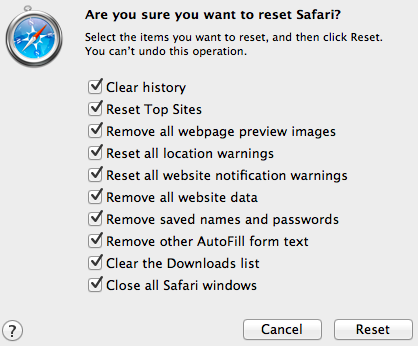

2. Click “Extensions” in the left menu. Then click on the trash bin icon to remove the suspicious extension.

3. Again in the left menu, under Chrome, Click on “Settings“. Go under “On Startup” and set a new page.

4. Afterward, scroll down to “Search“, click on “Manage search engines“.

5. In the default search settings list, find the unknown search engine and click on “X“. Then select your search engine of choice and click “Make default“. When you are ready click “Done” button in the right bottom corner.
1. Start Mozilla Firefox. In the upper right corner, click on the Open menu icon and select “Add-ons“.

2. Inside the Add-ons Manager select “Extensions“. Search the list of extensions for suspicious entries. If you find any, select them and click “Remove“.

3. Click again on the Open menu icon, then click “Options“.

4. In the Options window, under “General” tab, click “Restore to Default“.

5. Select “Search” in the left menu, mark the unknown search engine and press “Remove”.

Remove Service Records from a Mac Automatically
While the above steps work very well in most of the cases when users’ OSX is infected with PUP or malware, sometimes the Mac virus removal requires the help of a professional application. This anti-malware tool will scan and remove malware from your Mac. It offers an active protection shield and comes with a variety of handy features that will keep your system fast, clean and secure.
DOWNLOAD Antivirus for MacSpyHunter for Mac Scanner feature is free. Other features are paid. Here you can review its EULA and Privacy Policy.



